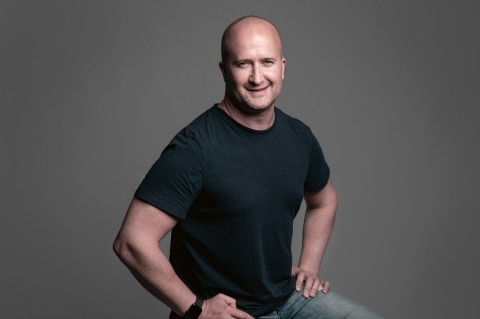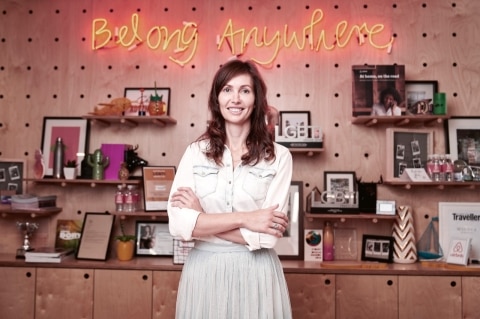The Rise of the Customer

A “customer first” philosophy once meant making sure your buyer liked what you sold. Then it meant making that interaction as smooth as possible. What’s next? the experience economy – and it’s giving consumers more power than ever.
Duncan Wardle has never been keen on focus groups. The Disney veteran believes the context is “forced” and that participants “always tell you what they think you want to hear”. His preference is for companies to talk to customers inside their homes, where a “self-regulating honesty policy” – interjecting spouses – keeps the feedback real. Wardle, who was head of innovation and creativity at the peak of his 25-plus years at Disney, is now teaching innovation at Yale University and has said he would “make it mandatory for everybody in your organisation who’s not in direct contact with the consumer to go spend a day per year in their living room”.
Many companies, of course, are already in people’s living rooms, if not their pockets. The digital transformation propelled by the pandemic, together with the explosion of data that preceded it, means business has never before possessed so much knowledge about individuals’ habits, tastes and desires. Airbnb’s first data scientist, Riley Newman, called data “the voice of our customers”.
The result? The focus on improving product – the quality movement and then the rise of hyper-personalised service – has morphed into something else again: the experience economy. And while a smooth transaction is now expected, the experience economy hinges on a positive customer environment. According to PwC research, customer experience has overtaken price and even product as the key brand differentiator. And consumers are willing to pay more for a great customer experience – as much as 13 per cent extra for luxury items.
“Just because an experience is personalised doesn’t mean it’s positive,” says Scott Russell, executive board member for customer success at software company SAP. “The focus used to be about, ‘How do I connect with my customer?’ and ‘How can I enhance every touchpoint with the customer?’ Now it’s, ‘How can my customer have a wonderful experience with us?’ These are very different things. You can have minimal touchpoints with your client but really positive ones.”
SEE ALSO: How Small Businesses Made Big Shifts in 2020
Customer experience is no longer just about friendly, attentive staff (customer service) or an automated, smooth experience (CX). It’s now about understanding how your customers will experience your business outside transaction channels. Woolworths, for example, last year used SAP technology to issue 22,000 “Kindness Cards” at the height of the pandemic. The cards, which were distributed by the government and charities to vulnerable customers, allowed the supermarket chain to identify and validate those eligible for priority assistance and enabled online access for people who didn’t have credit or debit cards. Some were e-gift cards with an $80 value. “This is an example,” says Russell, “of a company moving from hyper-personalisation to true customer experience and positive environments.”
Adore Beauty was a pioneer of local online cosmetics retail and, says the company’s chief marketing officer, Dan Ferguson, “for a long time in Australia, a great online experience was just being able to buy online”. Adore was early to offer free shipping because “worrying about delivery adds to the friction” of an online store experience. “We put the experience slightly ahead of the economics because we knew it was right.”
Adore’s customer service team asks for feedback on thousands of transactions each day. “It’s not only important where you collect and what tools you use to get feedback,” says Ferguson. “It’s what you do with it.” Post-purchase survey answers to “How was that experience; what can we improve on?” are shared via the company’s Slack and read by everybody from founder Kate Morris to staff in merchandising and tech. “It’s a stream of verbatim feedback that gently shapes everything we talk about. It changes conversations in meetings: ‘Oh, it seems our customers are constantly talking about wanting better rewards’ or ‘They’re annoyed with the site right now’. That’s important, that ‘right now’ feeling. The customer is always in our ear.”

When asked if an unrepresentative but compelling comment could potentially propel the company in the wrong direction, Ferguson laughs. “When it’s 24/7 you actively sort out what are outliers. You do see things reoccur… Qualitative should come first. It gives you much better clues to interpret the quantitative.”

Scanning guest reviews during 2020, Airbnb learned there was a 128 per cent increase globally in the use of words such as “relocate” and “remote work”. “We realised our customers were looking not for ‘work from home’ but ‘work from any home’,” says Susan Wheeldon, country manager of Airbnb Australia and New Zealand. So the rental accommodations platform provided an alternative for hosts by quickly building features that allowed discounts for longterm stays. “The customer can tell us without telling us what they want.”
That said, Wheeldon regularly uses Airbnb as both guest and host, “so I can understand pain points in user experience from both sides”. The company uses focus groups and customer behaviour research but also, “I spend a lot of time on phone calls with core hosts [who list one property] and pro hosts [who have multiple listings] because, frankly, they tell you things you haven’t spotted.”

For Wheeldon it’s about a direct, personal relationship with the consumer base and ensuring customers have the ability in whatever form to give “frank, unvarnished assessments”. Then she turns to the data. “Often we assume we know what the problem is. Then when we dig a bit deeper, it’s something different.”
For example, the platform would update hosts when guests were checking in and out, and when it was time to post a review. “We thought we were being helpful but if you’re a pro host with 100 properties and you’re getting 100 emails, you’d miss the one email from us that tells you about an amazing pricing tool or training webinar. We thought people weren’t attending training because they weren’t interested. Actually, we were burying it.”
Wheeldon, who joined Airbnb in 2019, admires the customer experience of another double-sided marketplace, clothing rentals company The Volte, and Sendle, a certified B Corp courier that makes every step of a parcel’s journey transparent. “If your parcel is lost, you click a button and Sendle hunts. If there’s a dispute [between lenders and borrowers], The Volte is quick to resolve it so both sides feel it’s the right outcome,” she says. “You need to make sure you have human interaction, plus the technology because when customers look to you for support, it’s because something’s gone wrong.”
SEE ALSO: How an Ex-Footballer Created a $30 Million Café Empire
Cross-device shopping via a range of channels can challenge a business – a customer might use a social platform then go to a web store before purchasing on a mobile site. “We would say most businesses are not able to use data to make good, informed decisions,” says SAP’s Scott Russell, who’s worked for the company for 11 years. “Often data sources are not connected – a business will have a separate CRM platform that’s not connected to the data that’s sitting in their sales orders and purchase orders. This leads to a siloed view of customers and limits the view to customer touchpoints. More comprehensive customer data platforms allow you to link the customer to every stage of operations and fulfilment.”
Organisations have disparate systems that sit outside their business, too, connecting to suppliers. “The main emphasis becomes: ‘How do we better understand our value chain?’” says Russell. “It usually starts with putting the customer at the centre but then the fulfilment may involve the supply chain using signals on demand and mapping the manufacturing.”
For a business such as Adore, a customer’s experience is entangled with their experience of any of the 260 brands it sells. That’s navigated by curation and user reviews but also podcasts and stress tests (trialling foundations while exercising, for example, on Adore’s YouTube channel). “People can homogenise how they think about customer experience and simplify it to: ‘How fast is the site?’ and ‘When do I get my delivery?’” says Ferguson. “But people are not just transactional online. The more generic an experience is, that irritates people. It’s important to have content, education and entertainment – elements that are rare or difficult to get instore.” Technology-wise, he’s most excited about the evolution of live-streaming and social e-commerce for Adore, and the mushrooming of contact methods that have moved from phone to email to live chat and which “will only develop as that experience gets more guided”.
While carshare company GoGet has a member experience team devoted to improving service, “Everyone is responsible for finding ways to make us better,” says Kate Humphreys, head of member experience and brand. “This is critical as our service is a necessary blend of software and physically making stuff happen.” Right now, there’s an internal initiative that each team, across all GoGet functions including fleet operations and software engineering, needs to generate and implement two tangible improvements to service. Some are linked to individuals’ KPIs.
Russell recommends companies hoping to improve customer experience make frequent, incremental changes rather than ripping apart the business model. In 2018, SAP announced it was acquiring experience management company Qualtrics, which captures and stores all of a business’s experience data from customers and employees, such as their satisfaction and feedback, and provides predictive analytics and recommended actions to help organisations design and improve the experiences delivered. Unlike surveys, where data is latent by the time it’s collated, it’s a continual learning loop that allows organisations to collect feedback through multiple channels, including direct email, chatbots and social media. A hotel group considering refurbishing its lobbies, for example, learned that guests just wanted to check in faster and queue less, so invested in tech instead. A B2B company
can evaluate and modify in real time its every interaction and system, gathering information from customers as they search the site, request a demonstration or undertake contract negotiations.
It’s about taking the spotlight off P&L performance and focusing instead on the net promoter score – the “How likely are you to recommend our company on a scale of one to 10” measure – and on how customers are interacting on the channels, what they’re actually saying. Success is measured often and broadcast company-wide. “You want to instill strong, enduring company values that place a premium on delivering an outstanding experience,” says Mark Leiter, author of Crafting Strategy in an Accelerating World. The chairman of consulting and investment firm Leiter & Company recommends empowering employees with relevant information about customers that they can access on all their devices. Interacting with customers is “definitely a shared responsibility”, he believes.
And every business unit needs to commit. “If you have one person responsible for customer experience, you might avoid thinking about it in a diverse way across the whole customer journey,” says Ferguson.
According to Ron Ritter, partner at management consulting firm McKinsey & Company, “It is a significant challenge to reorientate a company towards the consumer. The good part is you actually do have something to rally around.”


